After more than two years of research about the breeding of Ca cuong (giant water bug), Le Thanh Tung (Ben Do 2 Hamlet, Tan Phu Trung Commune, Cu Chi District, Ho Chi Minh City) has successfully built a farm raising more than 8,000 of this insect. This is a model that not only brings about high economic income for his family but also contributes to the preservation of a rare insect in danger of extinction in Vietnam.
Le Thanh Tung has long been known for raising different insects like crickets, centipedes, and scorpions. His Thanh Tung cricket farm is one of the major cricket suppliers for Ho Chi Minh City and the surrounding areas. However, due to market changes and the decreasing price of insects, he decided to move to raising giant water bugs. After researching via social networks and contacting interested people, he realised that there was no place selling or breeding Ca cuong. He then decided to find the insect in natural bodies of water near his house to use for breeding. After nearly a month of catching them, he managed to get five insects.
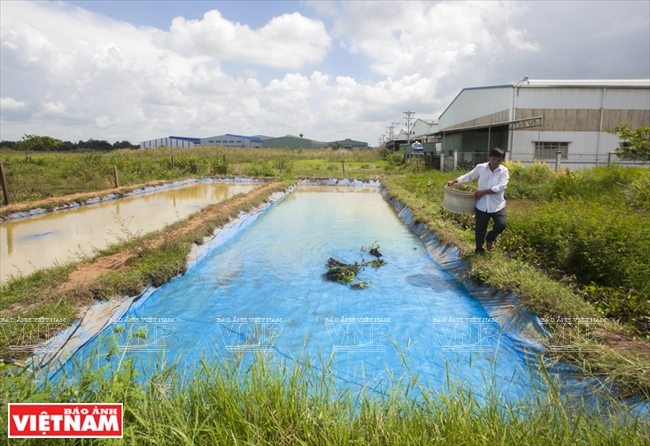
Part of Le thanh Tung's ca cuong farm in Ben Do 2 Hamlet (Tan Phu Trung Commune, Cu Chi District, Ho Chi Minh City).
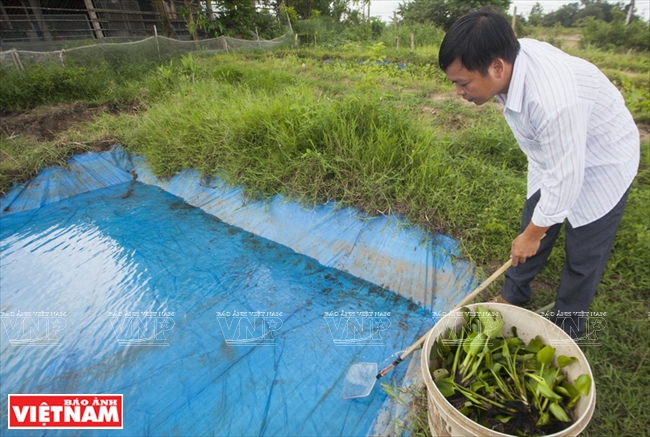
Releasing Ca cuong into a pond.
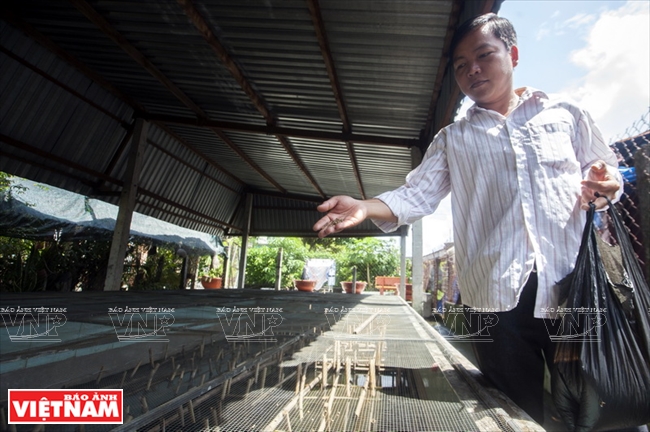
Feeding Ca cuong.
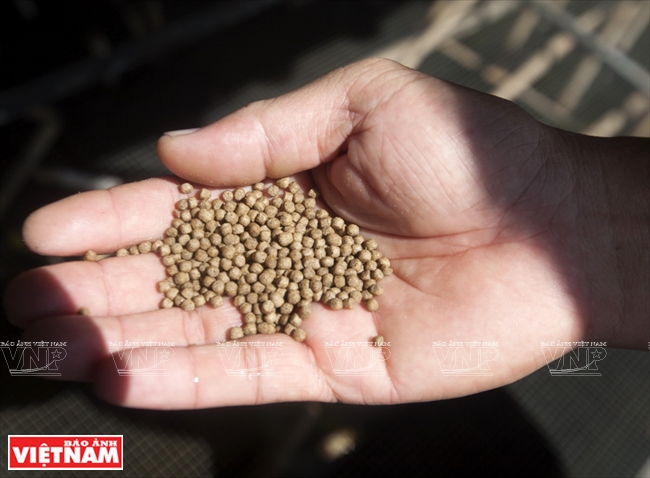
A type of industrial food for Ca cuong.
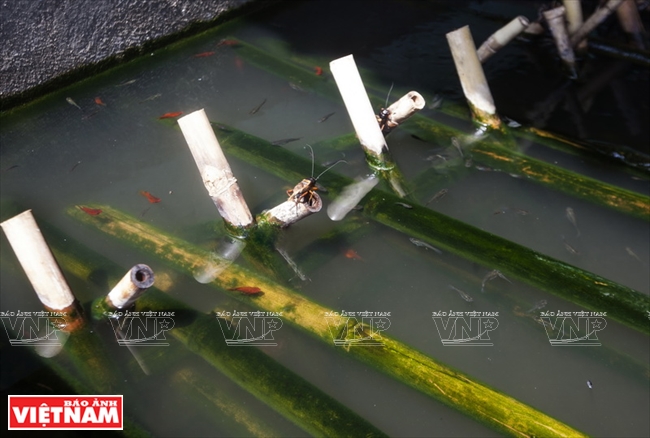
Creating a favourable and natural environment for Ca cuong to develop well.
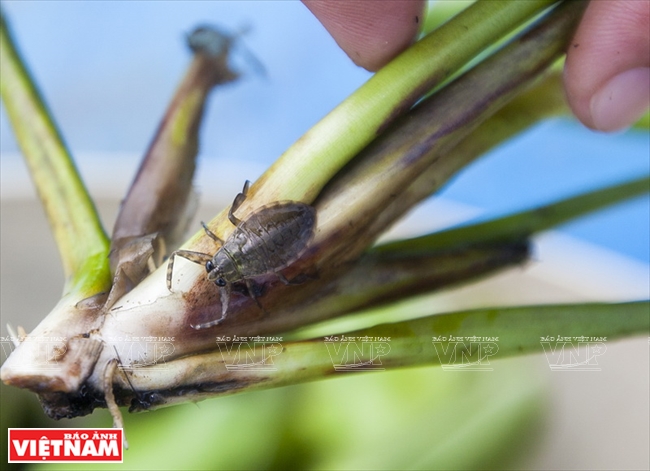
Ca cuong like to climb onto plants put into the pond like water hyacinths.
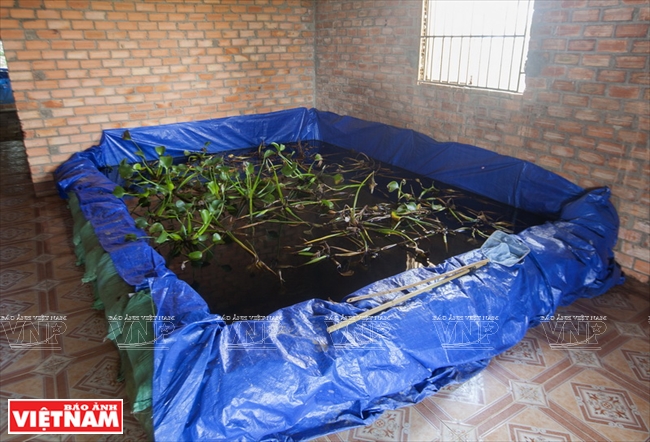
Ponds at Le Thanh Tung's farm are designed to meet technical requirements for Ca cuong raising. |
Ca cuong's scientific name is Lethocerus indicus Lep. et Serv. It is a giant water bug from the Belostomatidae family that live mostly in fresh water streams and ponds. The insect has a flat, leaf-shaped body of an average 7-8cm and some may reach the length of 10 to 12 cm. Ca cuong's essence has a characteristic aroma that is similar to cinnamon and can be used to produce a medicine to cure children's bedwetting or enhance the physical ability of adult.
|
Based on his knowledge about Ca cuong and how to raise it learned from different materials, Tung started breeding the insect and invested about 300 million dong to build raising ponds. Ca cuong spend their day in water and at night fly out so Tung also had to makes covers over the pond to prevent them from escaping. Each pond is 20-30cm deep, and every square meter houses from 20-25 breeding bugs or 80-100 mature bugs ready to be eaten. According to Tung, suitable space is essential as a too densely populated area can cause Ca cuong to kill each other for food or under-develop due to lack of living space.
Ca cuong is an insect with good reproduction ability. It takes a newly hatched Ca cuong 2.5 months to be able to breed, and only1.5 months to mature for commercial trading. As it is an omnivorous insect, whose main foods includes shrimp, frogs, tadpoles, fish, and crickets, a good raising environment can easily increase the number of bugs.
With a sizeable and scientific raising model, from 5 bugs at the start, now Tung has more than 8,000 Ca cuong. Each day he sells about 100 at a price of 35,000-40,000 each to restaurants in Ho Chi Minh City, earning nearly 4 million dong. In addition, he also sells breeding Ca cuong during the egg production period at a price of 300,000 dong each to people who want to research or raise the insect.
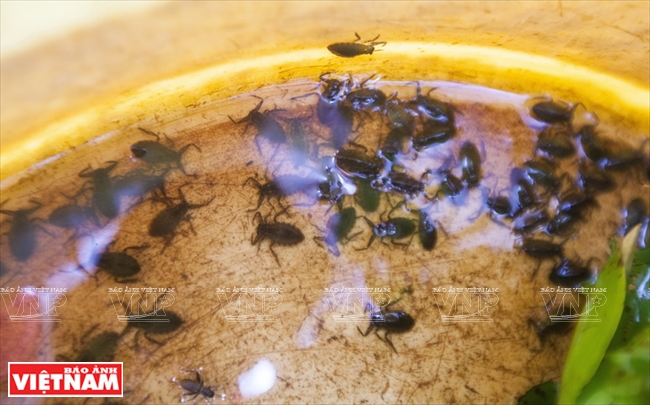
Young Ca cuong raised at the farm.

A 1.5 month-old Ca cuong can be harvested for food.
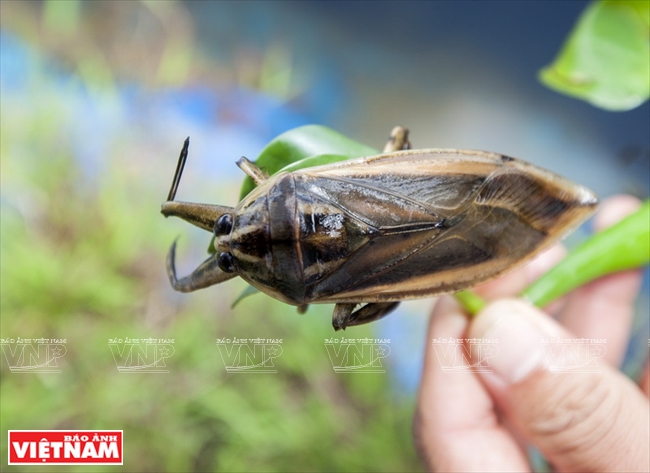
A Ca cuong is now sold at the price of 35,000-40,000 dong.
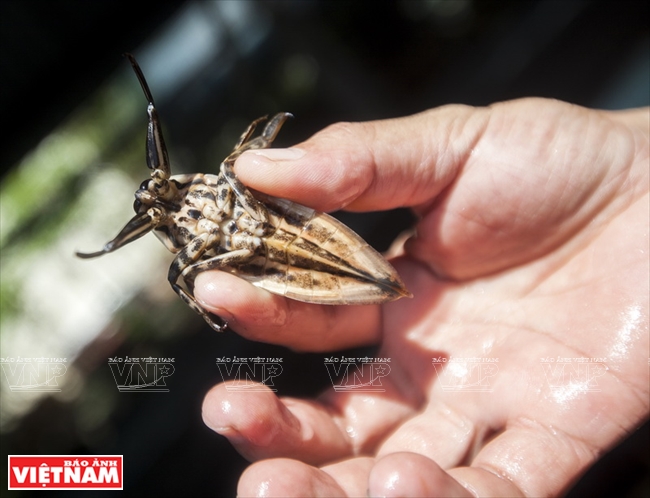
Ca cuong is seen as a scarce insect with many uses, especially its extract.
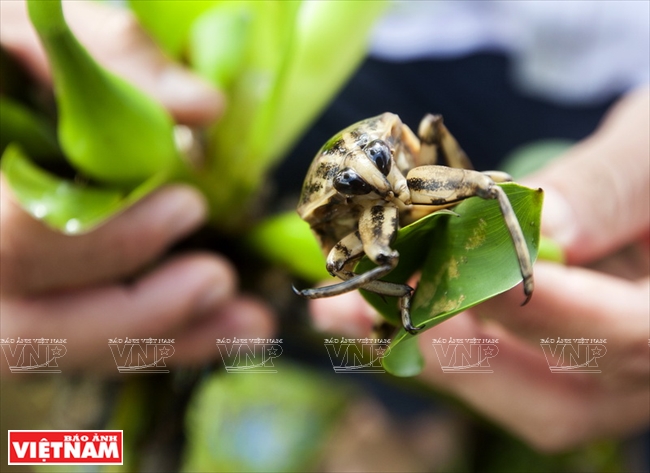
Raising Ca cuong not only brings about high economic income but also contributes to the preservation of this rare insect. |
Besides four Ca cuong raising farms, Tung is also raising other insects, such as crickets to use as food for Ca cuong, or other insects to supply his family’s restaurant. His is willing to share his ca cuong raising experience with anyone who is interested in raising this scarce insect and wants to earn money from it.
Ca cuong is often thought of as a specifically northern insect with several uses, most notably its essence that is often added to fish sauce. However, the insect has been fading into oblivion as its population in nature experiences a sharp decrease. Many banh cuon restaurants in Hanoi still serve the special fish sauce with Ca cuong essence but according to Tung, they mainly use artificial essence rather than a natural Ca cuong extract.
|
Story: Nguyen Vu Thanh Dat – Photos: Thong Hai